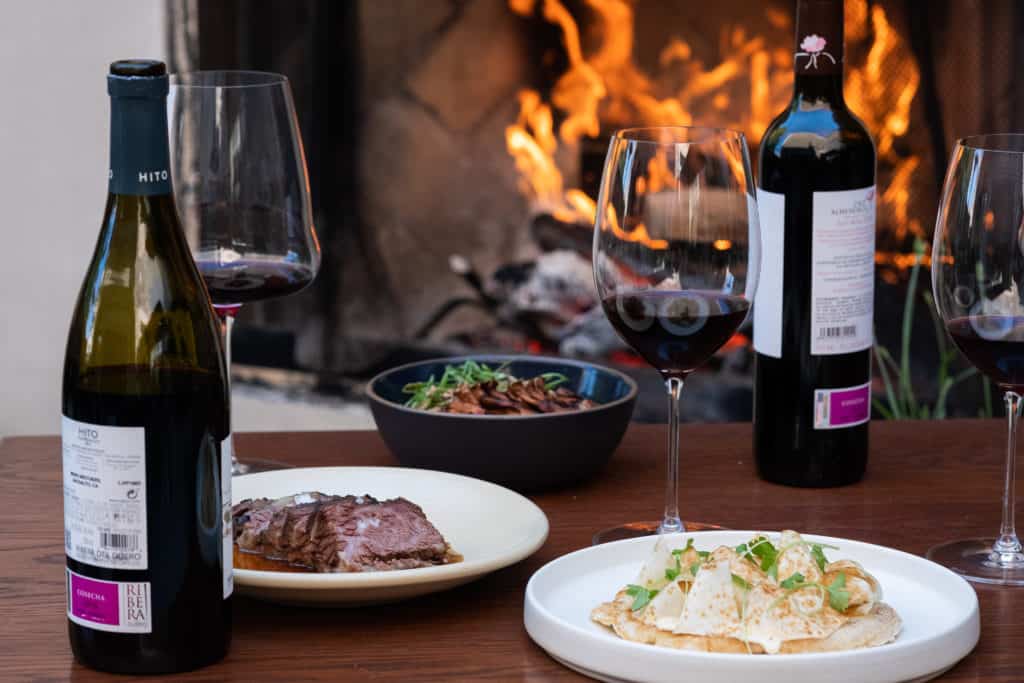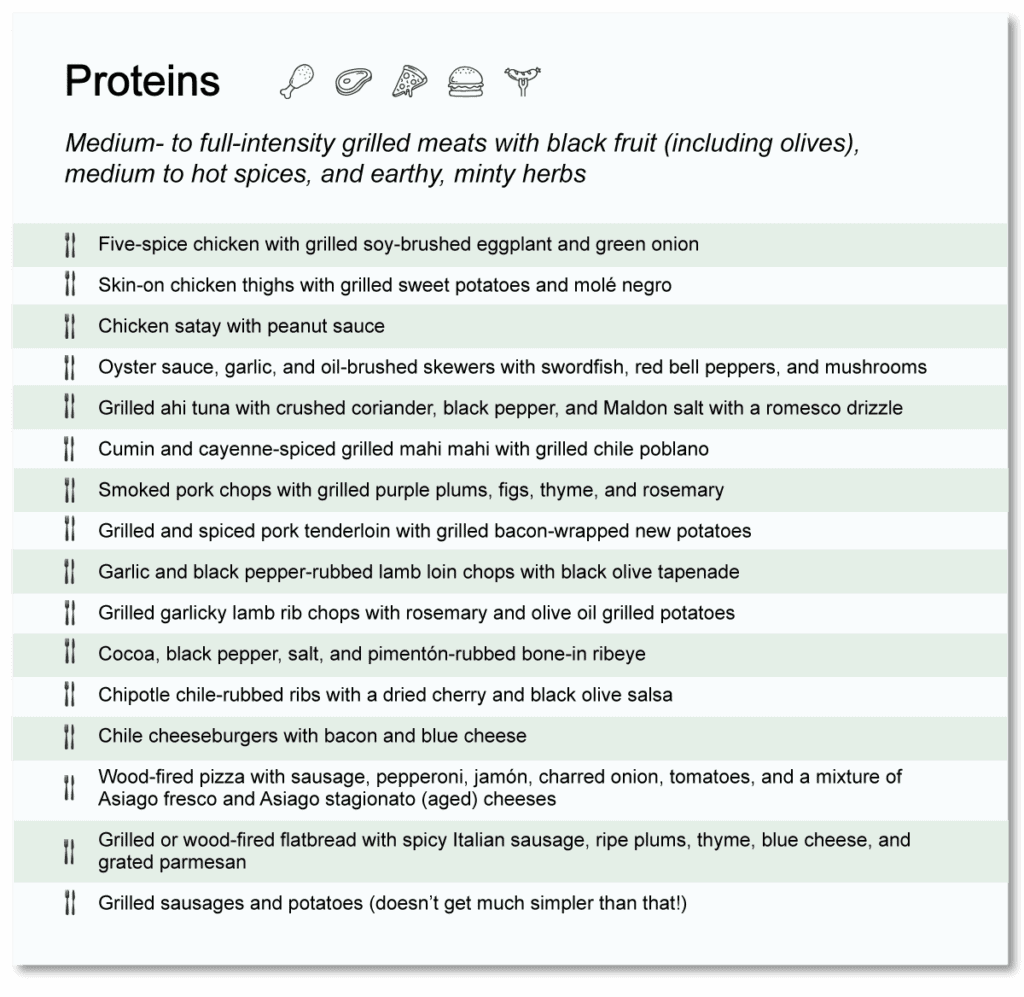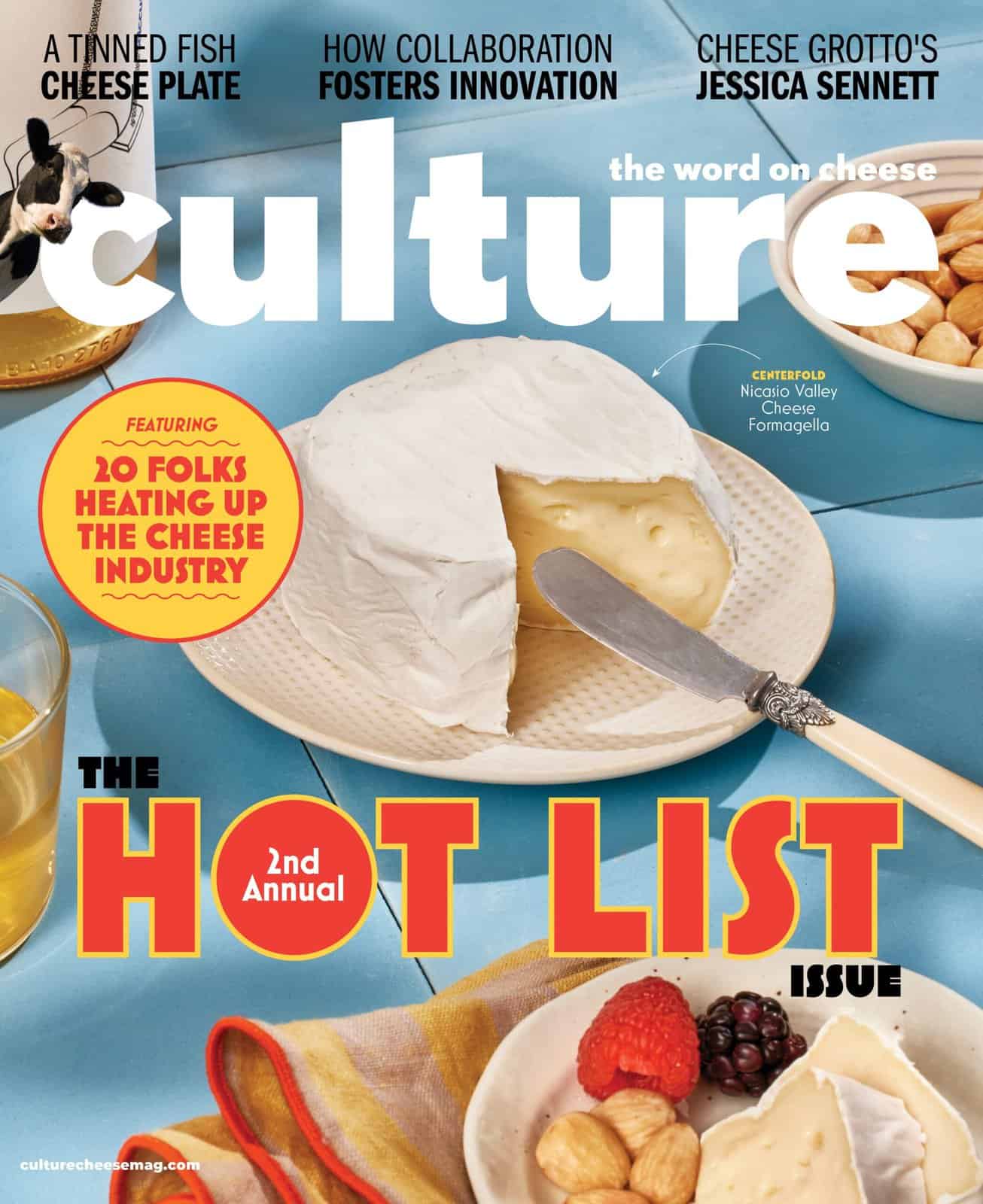
Where there’s a grill, there’s a way – Maude Frédérique Lavoie/Unsplash
Grilling is the bridge between get-togethers and conversation. It is a spectator sport that thrills us with its sizzle, its transformation of food from light to dark, soft to crisp. Sweet vegetables become sweeter, and raw proteins explode with flavor after the kiss of fire. Like the fire starter itself, grilling kicks off a good-natured if sometimes heated conversation not just because of the heat coming off the grill but also because no two grilling opinions are ever alike, and no two grilling outcomes are ever the same.
This conversation is temporarily halted when the black-edged fatty steak and intensely seasoned vegetables are lifted off the grill and transferred to platters. Anticipation sets in but not for long as the rallying cry of any such gathering is, “Let’s open some wine!” For a repast edged with char, heavy on proteins, and laced with spice, the wine to open unquestionably comes from Spain. The grape is Tempranillo, and the place is Ribera del Duero.
Translating to the riverbanks of the Duero, Ribera del Duero in Castilla y León is home to Spain’s king of grapes, Tempranillo. This mighty grape is also king when it comes to pairing it with anything charred, crisped, caramelized, spicy, fruity, and savory. Simply put, anything that comes off the grill is Ribera Tempranillo’s best friend.
Given the long grilling history in Spain and the fact the Tempranillo grape grows in the shadow of historic castles throughout the region, it stands to reason that outdoor cooking and Tempranillo would pair together. The fact Ribera Tempranillo is grown at various altitudes, in different soils, and made in several styles assures its compatibility with everything from heavily spiced butterflied spring lamb to crackling crisp suckling pig to highly seasoned well-marbled beef to herby, edgy veggies – and much more. That just-right line between char and burn together with the orange glow of the fiery coals is as seductive as the wines themselves. Matching grill food and Tempranillo is a delicious pursuit that gets even better with a little know-how.
The Tempranillo lowdown
Despite the many geographical, winemaking, and aging styles that ultimately shape what’s in the bottle, Ribera Tempranillo is a red wine with medium to high acidity and flavors and aromas of red and dark fruit including raspberry, blackberry, plum, black currant, blueberry, red and black cherry, and cranberry. Dried fruit aromas like figs and prunes might make an entrance too. Spices and herbs like mint and black pepper can also be hallmarks of this grape while oak aging brings out chocolate, tobacco, and cinnamon notes.
Possibly the most distinctive characteristic of Ribera Tempranillo is its range of tannins from soft to bold with most being somewhere in the middle. Its texture has an equal range, spanning from light to full-bodied.
Younger and lighter Tempranillos, usually categorized as Crianzas because of their relative youth (Crianzas are defined as wines aged at least one year in oak), sport bright red fruits and light tannins and take to simple starters like jamón, dried sausage, medium-aged cheeses including Manchego, cheddar, and goat cheese among others, chicken satay, beef sliders, pepperoni pizza, dry-cured black olives with red pepper flakes, and stuffed mushrooms. Crianzas take to herbs like Thai basil, dill, and oregano while baking spices include cinnamon, clove, and nutmeg. The savory spice box for young Tempranillos includes pimentón, cayenne, black pepper, cumin, juniper berries, Chinese five-spice powder, Thai red curry (medium heat), garlic, harissa paste, and Hungarian sweet or spicy paprika.
The longer-aged Reservas – wine that is aged at least three years including at least one year in barrel – are wines with greater depth, usually more pronounced tannins, and darker fruit. For a grill fest, this means pretty much anything you want to cook on the grill – lamb, beef, pork, chicken, meaty fish like swordfish and ahi tuna, portobello mushrooms, soy-brushed squash, spiced eggplant, and even a slow-cooked pot of beans. Herbs like mint, rosemary, thyme, and sage will do well here.
The “gran-daddy” of Ribera Tempranillos – Gran Reserva – is a wine that is aged five years with at least two in a barrel. Taking this wine outdoors means firing up the big guns – the slow-smoked meats, the well-marbled rare-cooked steaks, the dry-rubbed ribs, the five-spice chicken, and of course, the unofficial dish of the Ribera region, baby lamb chops grilled over vines. In the United States, grilled and fire-roasted lamb of any kind will love a Gran Reserva.
The fourth category of Ribera Tempranillo is a bit of a catch-all. Called Cosecha, these are wines that fall outside the other three categories but meet or exceed the specifications of those other categories. They may be younger than a Crianza, in which case they’re called joven (young), or they could be older than a Gran Reserva. Or, they might fall somewhere in the middle. Cosechas are an expression of the winemaker who allows the wine to decide when it is ready for consumption. Some of Ribera del Duero’s most prized winemakers are making bottles that fall into the Cosecha category, which means that when the coals are just heating up, bring out the Cosecha. When the coals are white-hot, bring out the Cosecha. Where there’s smoke, there should be Cosecha.
Fire up the grill, bring out the Tempranillo
The Tempranillo table is set. Now it’s time to put it all together. Start with this pocket guide to your Tempranillo grill-fest and be inspired by the dish suggestions that follow.

Tempranillo and grilling pocket guide
The spice box: Anise, black pepper, Cajun spice, cayenne, cumin, Chinese five-spice powder, curry powder, garlic powder, harissa paste, Hungarian sweet or spicy paprika, onion powder, pimentón, Thai red curry (medium heat), red pepper flakes
Baking spices: cinnamon, clove, nutmeg
All together: Think assertive, medium to hot, sweet-savory, and multicultural.
The herb garden: Bay leaf, caraway, lavender, marjoram, mint, oregano, sage, thyme, and rosemary
All together: Think herbaceous, earthy, menthol, aromatic.
The proteins: Beef, chicken, lamb, pork, meaty fish such as swordfish, ahi tuna, and mahi mahi, veal chops, sausages, quail, squab
All together: Think rubs and intense flavorings.
The vegetables: Eggplant, legumes such as broad beans, chickpeas, lentils, navy, and soybeans; cauliflower, mushrooms, red bell pepper, chiles (chipotle, jalapeño, poblano, padrón, and shishito), parsnips, plantain, potatoes, shallots, summer and winter squash
All together: Think savory, spicy, or chameleon-like (read: ready to take on the heat of the flame and the flavors of the spices).
The fruits: Black cherries, black olives (oil-cured), blueberries, figs, plums, plantain (green only), grilled tomatoes
All together: Think dark-skinned, charred, and savory.
The cheeses: Semi-soft, medium-strong cheeses such as French-made Brie and Camembert; semi-hard savory sheep’s milk cheeses such as medium- to long-aged Manchego (9 – 12 months), Zamorano or Pecorino Toscano; bandage-wrapped English-style cheddars, medium-aged goudas, Asiago Fresco (fresh), Asiago Vecchio or Stagionato (aged), Piave and Piave Vecchio, parmesan-style cheeses, Los Cameros (Spanish mixed-milk cheese)., and cotija. Creamy but not pungent blue cheeses can also work well.
All together: Think meaty, savory, mushroomy, brothy, grassy, and nutty. Some will have hints of butterscotch or brown butter. This is good!
The condiments and sauces: Chimichurri, chili crisp, red chile-based hot sauce, harissa, chipotle salsa, salsa macha, balsamic vinegar, olive oil, black olive tapenade, molé, oyster sauce, peanut sauce, romesco sauce, soy sauce, tamari, red or yellow Thai curry paste, Worcestershire sauce, cocoa powder
All together: Think medium to hot spice, umami, not too sweet, rich, and savory.





